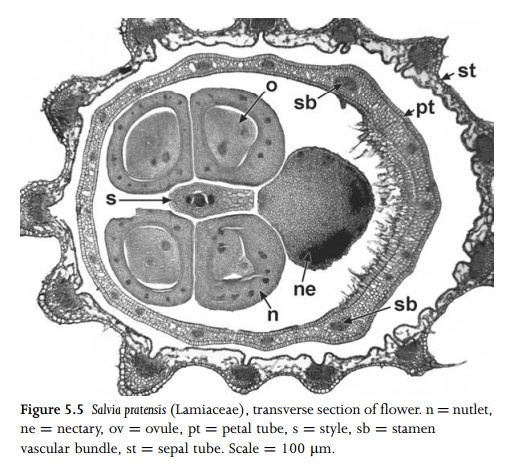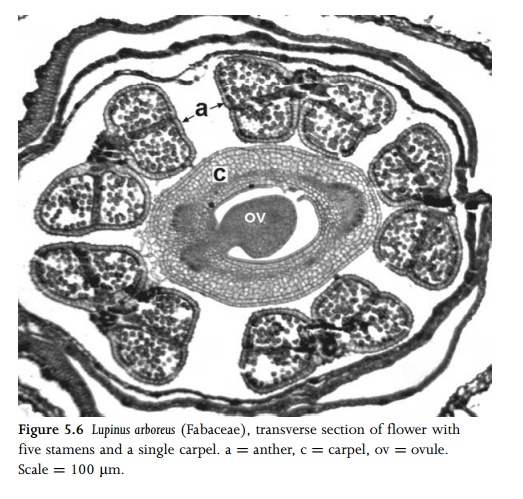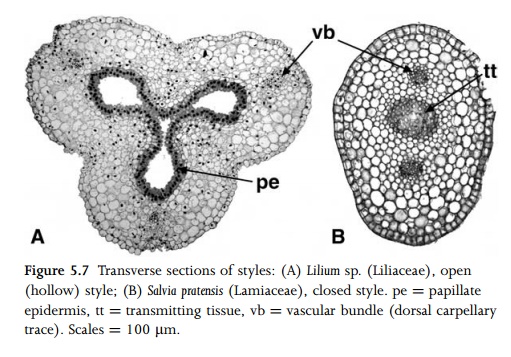Chapter: Anatomy of Flowering Plants: An Introduction to Structure and Development : Flower
Floral Vasculature
Floral Vasculature
In the
majority of flowers, each organ is served by a single vascular strand that
diverges from the central vascular cylinder in the receptacle and subsequently
branches (Figs 5.5, 5.6).


Perianth traces are normally highly branched, often forming a vascular
network. Most stamens typically bear a single vascular strand, but some
families characteristically possess three or four stamen traces. Others, such
as Araceae35, possess diverse and often branching stamen
vasculature. Many species possess two carpellary vascular bundles: the ventral
carpellary trace, which diverges into the ovules, and the dorsal carpellary
trace, which passes up the style into the stigma (Fig. 5.7). The number of
vascular bundles in the style of a syncarpous gynoecium is often an indicator
of the number of carpels present, though in some species bundles are branched
or fused.

Related Topics